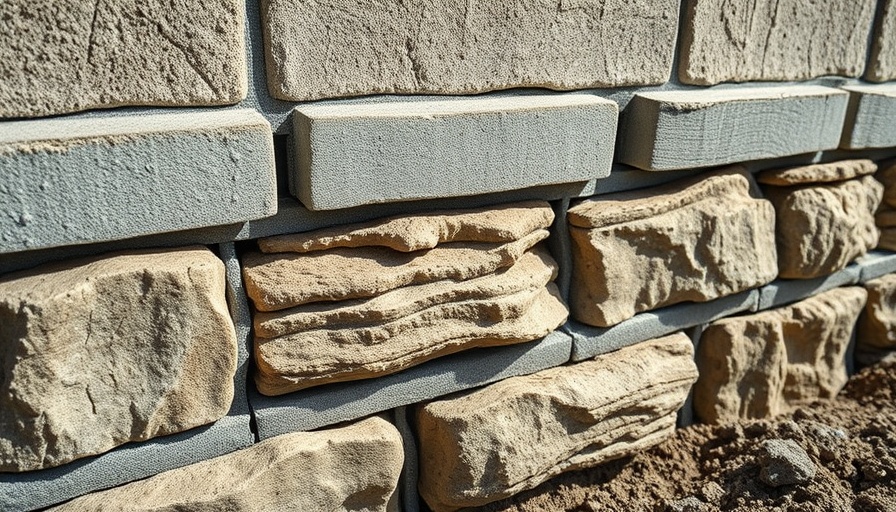
Understanding the Importance of Insulating Foundations
When building structures, the foundation is critical as it supports the entire structure while protecting against moisture and temperature fluctuations. For those working in construction or architecture, understanding the methods of insulating foundations is essential, especially when considering materials like block and stone.
Why Insulation Matters in Foundation Design
In modern construction, temperature control and moisture management are paramount. As energy efficiency becomes central to building practices, insulating foundations not only protect the structure but also enhance sustainability. Using materials such as block and stone provides both strength and the ability to buffer temperature extremes, particularly important in various climates.
Exploring Sustainable Material Choices
Natural stone foundations are increasingly recognized for their durability and thermal mass properties. Per the insights from the Marble Guide, these foundations, made from locally-sourced stones like granite and limestone, not only support structures for centuries but also significantly reduce environmental impact. As the construction industry leans towards eco-friendly options, the combination of traditional stonemasonry with modern techniques makes stone an excellent choice for foundations.
Installation Best Practices for Block and Stone Foundations
Proper installation is vital for the efficacy of insulating foundations. As cited in the GreenBuildingAdvisor, the effectiveness of a foundation can significantly diminish if corners are cut during installation. It is important to maintain accurate grading and incorporate proper drainage to manage moisture effectively. When constructing with blocks and stone, ensuring that materials are well-sourced and correctly layered reduces the risk of future settling and structural issues.
Benefits of Using Block and Stone
Choosing block and stone for foundations offers unique benefits. These materials are durable, energy-efficient, and environmentally responsible. Innovations in construction techniques allow builders to maximize the advantages of these materials, ensuring longevity and stability. Furthermore, their local sourcing minimizes transportation emissions, enhancing the ecological footprint of construction projects.
Future Insights on Foundation Technologies
As we look toward the future, advances in building technology are expected to further enhance the efficiency of foundation construction. Emerging materials, improved insulation methods, and innovative techniques will redefine how we approach foundational integrity. Understanding the potential for advancements in block and stone insulation can set a benchmark for future projects focused on sustainability.
Conclusion: A Step Towards Sustainable Building Practices
For contractors and architects focused on sustainability, emphasizing insulation in block and stone foundations is not just about meeting regulations but a commitment to innovative, eco-friendly construction practices. By employing well-sourced, durable materials and mastering installation techniques, professionals can significantly enhance the longevity and sustainability of buildings, paving the way for a future where construction contributes positively to environmental health.
If you’re looking to delve deeper into sustainable construction practices or explore innovative materials for your next project, consider engaging with industry thought leaders or attending a green building conference.
 Add Row
Add Row  Add
Add 




Write A Comment